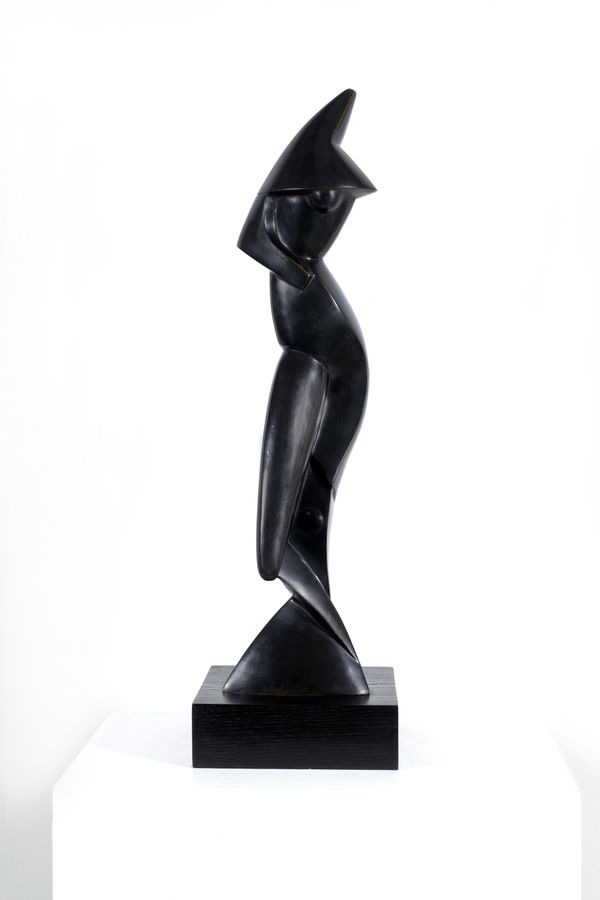Alexander Archipenko
(Ukrainian/American, 1887-1964)
Alexander Archipenko was a sculptor and graphic artist, born in Kyiv, Ukraine in 1887. From 1902-1905, he attended the Kyiv Art School, and in 1906 he continued his education at Serhiy Svetoslavsky. Here, Archipenko exhibited with Alexander Bogomazov, before he briefly moved to Moscow, where his art experienced exposure in a set of group shows.
In 1908, Archipenko moved to Paris, where, between 1910-1911, he exhibited at the Salon des Indépendants and Salon d'Automne, together with Aleksandra Ekster, Kazimir Malevich, Vadym Meller, Sonia Delaunay-Terk, Georges Braque, and André Derain, to name a few. Unlike many of his contemporaries, Archipenko deviated from the neo-classical sculptural approach of his time to adopt a new way of looking at the human form, through the manipulation of faceted planes and negative space. His figural sculptures offer a number of simultaneous viewing points of the subject, which emphasise the voids devised by the artist. Archipenko was one of the first artists to apply these cubist principles to sculpture, whereby he translated the human figure into geometrical forms.
From 1912-1914, Archipenko taught at his own art school in Paris, whilst he concurrently exhibited his first personal show at the Museum Folkwang in Hagen, Germany, in 1912, and contributed to the Armory Show in New York in 1913 with four of his Cubist sculptures.
Ever on the move, Archipenko relocated to Nice in 1914, going on to participate in the Twelfth Biennale Internazionale dell’Arte di Venezia in Italy in 1920, and open his new art school in Berlin the following year. In 1922, he contributed to the First Russian Art Exhibition in the Gallery van Diemen in Berlin together with Aleksandra Ekster, Solomon Nikritin, and El Lissitzky, among others.
Emigrating to the United States in 1923, Archipenko received his citizenship in 1929. From the Ukrainian Pavilion (1933) in Chicago to the Cubism and Abstract Art show (1936) in New York, Archipenko contributed to numerous exhibitions across the U.S. and Europe throughout his career. In honour of his contributions, he was elected to the American Academy of Arts and Letters in 1962.
Archipenko died on February 25, 1964, in New York.

